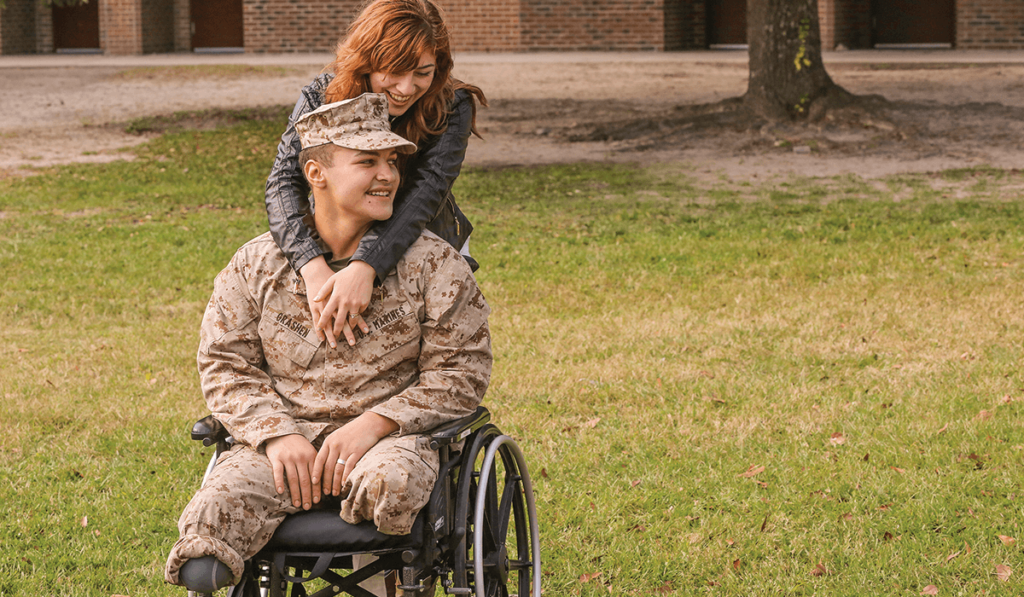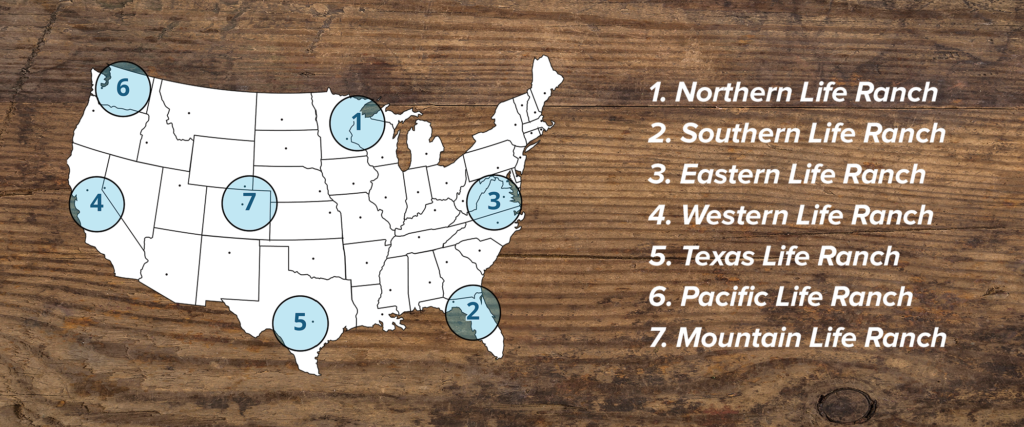One of the most rewarding parts of operating a nonprofit is meeting the men and women our organization exists to serve. Today, I want to talk specifically about wheelchair-bound veterans. From time to time we all see or meet people in wheelchairs. Some of these are veterans. In fact, there are as many as 85,000 veterans in wheelchairs—disabled as a result of combat-related wounds, accidents, or disease. Wheelchair-bound veterans are a key people group our nonprofits aim to help.
In traveling to some of the country’s specialized medical facilities for wheelchair-bound veterans, I am amazed by what I see. The state-of-the-art rehab equipment and modern architecture of these facilities are eye-catching, but the most striking thing is the faces of the vets themselves; the faces of men and women who are dealing with life-altering trauma or disease. In many I see great courage and determination. In some I see heartbreak, fear, anxiety, loneliness, and physical pain. In others I see despair, resignation, and hopelessness. After speaking to many of these men and women, it is clear that the difficulties they experience go far beyond the injury itself. An accident resulting in wheelchair placement can have exponential effects on the veteran’s everyday life and that of his or her family.
Many of these wheelchair-bound individuals are young active duty soldiers, sailors, and airmen, or veterans who previously served in the military. They’ve incurred their disability primarily through accident, such as a vehicle crash, a diving incident, or some sort of fall. A smaller number become disabled as a result of enemy attack. For those who have experienced their disability through trauma, life changes are radical and sudden. In addition to the trauma experienced by the veteran, their close family is thrown into turmoil, compounding the situation. During these circumstances—while physical care for the disabled veteran is being provided—new stressors can immediately emerge for the veteran and their family: anxiety; fear; isolation; altered and inadequate communication among family members; financial troubles; changes in marital experience; transportation and scheduling headaches; job demands; poor nutrition and sleep. Over the mid- and long-term, such stressors can lead the veteran toward substance abuse, depression, divorce, and in the worst cases, suicide. While government agencies deal very well with the physical recovery of severely disabled veterans, many of these secondary consequences of trauma are not addressed well, if at all. This is how—and where—you and I can help big time!
Typically, after a veteran experiences a traumatic event or disease causing a severe disability, they can receive many weeks or months of treatment, surgeries, rehabilitation, and therapy in select Veterans Administration (VA) hospitals. There are currently 26 VA Spinal Cord Injuries and Disorders (SCI/D) Centers around the Country designed to care for such veterans. Some SCI/Ds are collocated with the VA’s five regional Polytrauma Rehabilitation Centers or smaller Polytrauma Network Sites, facilities designed to provide complex care for service members experiencing multiple head and limb injuries.
Forward Free plans to establish each of its seven Life Ranches regionally near key VA Polytrauma facilities in order to best serve disabled veterans in wheelchairs, clearly our most challenged people group. These locations include: Minneapolis, Minnesota; Seattle, Washington; Palo Alto, California; San Antonio, Texas; Denver, Colorado; Tampa, Florida; and, Richmond, Virginia (see map).
 More specifically, here’s where we have great opportunities to address these very real needs for veterans and their families. Since many of these challenges emerge during the veteran’s hospital stay, we will invite them with their caregivers and families to the Life Ranch nearest the VA hospital immediately following their hospital discharge. This will give them up to two weeks together in transition to their home, where we can help them deal with the various stressors described above. Ranches will be staffed to care for all but the most severely disabled veterans and will provide an environment suited for rest, recuperation, recreation, as well as respite care.
More specifically, here’s where we have great opportunities to address these very real needs for veterans and their families. Since many of these challenges emerge during the veteran’s hospital stay, we will invite them with their caregivers and families to the Life Ranch nearest the VA hospital immediately following their hospital discharge. This will give them up to two weeks together in transition to their home, where we can help them deal with the various stressors described above. Ranches will be staffed to care for all but the most severely disabled veterans and will provide an environment suited for rest, recuperation, recreation, as well as respite care.
We will provide faith-based programs of counseling and education to help families deal with the consequences of stress and trauma, and provide them resources and human connections in their community where possible. Further, all facilities will go beyond basic accessibility guidelines to provide gold standard capabilities of access for our Nation’s severely disabled veterans. And since disabled veterans return to the VA’s SCI/Ds annually for wellness checkups, we envision the veterans returning to the nearby Life Ranch every year in conjunction with their VA visit. Like their initial visit, veterans could visit the Life Ranch with or without their caregiver and family.
This type of compassionate, free, faith-based care for disabled veterans in wheelchairs and their families is simply not available in the United States today. In addition to wheelchair-bound veterans, Forward Free plans to serve other groups as well, including: combat-wounded veterans; other veterans with severe disabilities; first responders; Gold Star families; pastors and missionaries; and others. Additionally, Forward Free will receive people in such groups from select foreign countries. This work of compassion will potentially reach millions of people, which is why the Forward Free vision requires significant capacity, a regional construct, and a long-term commitment. Please help us make it possible!

Comments Off on Wheelchair-bound Veterans